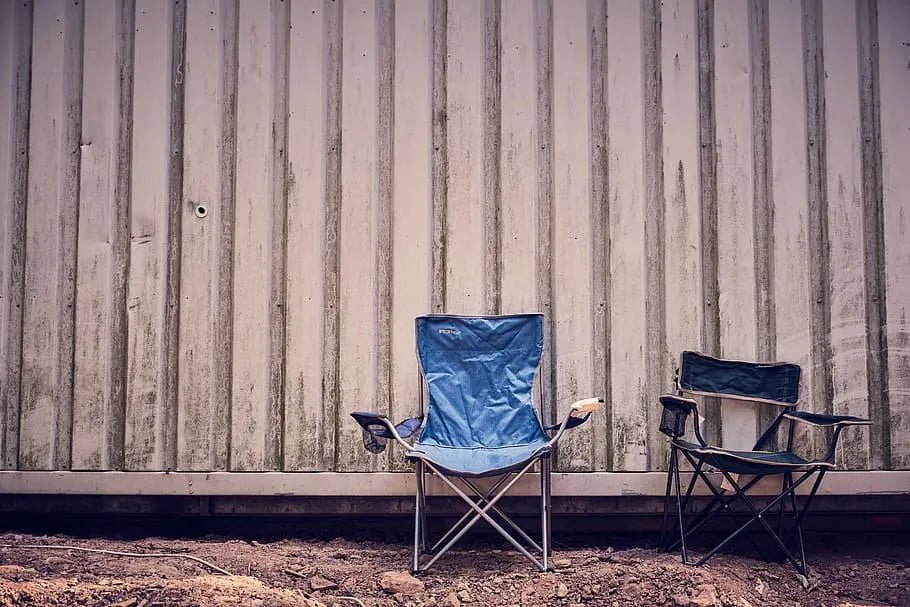Camping trips are never complete without the beloved camping chair. These chairs, whether they are foldable or hanging, have become faithful companions to many experienced campers, accompanying them through countless fireside stories and tranquil sunsets. But what happens when these cherished camping companions succumb to the rigors of outdoor life and suffer damage? More often than not, there's a way to restore them to their former glory rather than abandoning them for newer models. This article is your comprehensive guide on how to breathe new life into a broken camping chair.
Camping chairs, just like the nature they are exposed to, come in diverse types. Thus, the repair process will naturally vary depending on the chair's design and the nature of the damage. Some minor damages can be fixed easily with household items, while others might require a bit more effort and resourcefulness.
The process to fix a camping chair can be boiled down into a simple five-step process:
1. Diagnosing the Problem: What’s the problem? Is the fabric torn, or is it the chair's structure that's compromised?
2. Evaluating the Repair vs Replace Dilemma: Does it worth repairing? If the damage is extensive, a new chair might be more cost-efficient. But if it's a minor hiccup, it’s definitely worth fixing.
3. Gathering the Appropriate Tools: Depending on the damage, the necessary tools may vary. A torn fabric demands a needle and a patch, while a broken leg could require glue or even welding equipment.
4. Measuring Matters: Measure how big is the hole, and cut a patch slightly larger than the hole.
5. The Repair Job: Sew a patch over a tear, or weld a broken leg back together. Remember, be patient and accurate.
With these steps completed, you'll not only have saved money but also preserved cherished memories associated with your chair. If you're interested in delving deeper into a detailed repair process, stay and keep reading.

Restoring the Holes on Your Camping Chair
In the case of repairing a camping chair, the first step is determining the nature of the issue. Usually, you'll find that the fabric of your chair has succumbed to the rugged outdoor life, resulting in holes. But don’t worry, this common problem is surprisingly simple to mend. To maintain the aesthetic of your chair, it's best to find a matching fabric. However, the emphasis should be on durability; a sturdy material, such as an old pair of jeans, can make an excellent patch.
If it is just a small needle, what you all need is to sew it with a needle and a thread, but if it’s not, here’s what we recommend you do, step-by-step:
1. Measure the hole and cut a piece of matching fabric 1 inch (2.5 cm) larger on all sides.
2. Gather a quality needle and thread that matches your chair's color.
3. Carefully stitch the patch over the hole, making sure it completely covers the damaged area.
4. Inspect your work to ensure the patch is securely sewn with no loose ends or gaps.
Once you’ve finished that, think about how did you store your chair. Did you preserve them correctly? And remember to keep an eye on avoiding potential hazards, like open flames, to prevent future damage.

Dealing with a Broken Leg on Your Camping Chair
A snapped leg on your camping chair presents a more intricate problem, yet it's one that you can typically tackle yourself. If your chair is made of plastic, the internet is a goldmine for spare parts. Oftentimes, the repair involves nothing more than a simple exchange of the damaged leg with a new one.
If your chair isn't from a recognizable brand or replacement parts come with a steep price tag, there are alternative solutions at your disposal. Adhesive substances like super glue or epoxy can mend a broken plastic chair leg. Yet, do note that once the glue wears off, the leg might break off again. This brings to light the benefits of investing in a camping chair with a more durable material, like aluminum or steel, especially if you need strong support, say, for a bad back.
Now, what if the leg of your metal camping chair breaks? Here are your options:
a) For detachable legs, seek out a replacement online.
b) If a rivet or screw is the culprit, replacing it should do the trick. You can remove a rivet by drilling into its center, and replacement screws are readily available at your local hardware store.
c) Welding can help repair a broken chair leg, especially if the weld point was the initial failure. If you're confident with a welding machine and can ensure the chair still folds after your repair, go for it. Otherwise, it's best to leave this to the professionals.
d) Sometimes, simply tightening loose nuts and bolts can rejuvenate your camping chair. It underlines the importance of regular inspection and immediate action at the first sign of damage, as timely fixes can prevent more severe, irreparable damage.
Remember, with a bit of knowledge and the right tools, there's no need to say goodbye to your favorite camping chair at the first sign of wear and tear.

Solving the Faulty Mechanism in Your Camping Chair
A malfunctioning mechanism, particularly one impacting the chair's foldability, also ranks high among common camping chair woes. When such a problem occurs, start with a detailed inspection of the chair to locate the troublesome part, and if required, dismantle the chair for a better look. Hinges often lie at the root of such issues.
If the hinge is indeed the problem, you can usually secure a replacement quite easily, as these components tend to come in standard sizes. The swap is a breeze: just remove the screw from the old hinge and introduce the new one. You'll likely have your chair back in working order in under a quarter of an hour.
In situations where the exact replacement part is elusive, don't despair. Here are some potential workarounds you can adopt:
a) Loose bolts could be the culprit, in which case, wield your wrench to tighten them and restore your chair's functionality.
b) If rivets instead of bolts are the issue, replacing them is a straightforward solution. Drill the rivets out and replace them with new ones. If reusing the same hole is not feasible, drilling a new one could be your way out.
c) Squeaky hinges? A dash of WD-40 or a similar product could silence the noise while providing necessary lubrication.
d) For minor cracks in the plastic components, a bit of super glue can provide a temporary fix.
So, remember, when it comes to faulty camping chair mechanisms, a touch of patience and a few basic tools can save you the cost of a new chair and prolong the life of your favorite outdoor accessory.

When it comes to minor damage, repairing your cherished camping chair is typically within reach. However, not all repairs make practical sense. For some, the cost and effort involved might outweigh the convenience of purchasing a new chair. For those instances where a fix is feasible, there are a variety of options at your disposal.
Some chair models offer replacement parts that can easily substitute for their damaged counterparts. Household items can be cleverly repurposed for mending fabric tears or patching up tiny cracks. As for broken chair legs, adhesive solutions or welding can breathe new life into them, given that you're familiar with these techniques.
Now that you're armed with this knowledge, why not embark on the mission to restore your most treasured piece of camping gear? And remember, every repair job is not only an opportunity to extend the life of your chair, but also a chance to add to the story that each adventure-filled camping trip helps to write. Repair, reuse, and relish the memories woven into your beloved camping chair.

